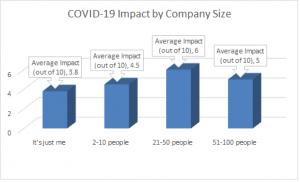|
20
06/2025
|
What are Conversion Costs? Definition Meaning Example
|
9
09/2021
|
Kategori : Bookkeeping Komentar : 0 komentar Author : Admin LPPM |

In addition to the equivalent units, it is necessary to track the units completed as well as the units remaining in ending inventory. A similar process is used to account for the costs completed and transferred. Conversion costs refer to those that are spent to transform raw conversion costs materials into finished goods, i.e. direct labor and factory overhead. In this section, we will delve into the concept of the conversion cost ratio and its significance in cost accounting and management. The conversion cost ratio measures the proportion of conversion costs to the total manufacturing cost, providing valuable insights into the efficiency and cost-effectiveness of the production process. Conversion costs differ from prime costs, which focus on direct manufacturing expenses like direct materials and direct labor.
- These tangible constituents of a product can be immediately identified when looking at the product.
- Calculating direct material cost involves multiplying the quantity of material used by its unit price.
- In summary, reducing conversion costs requires a holistic approach that combines technical optimization, strategic marketing, and continuous monitoring.
- Use the conversion cost per unit to set prices and budgets for the product.
- Manufacturing overhead includes all other production costs that cannot be directly attributed to labor or materials.
- Prime Cost, however, is the sum of direct materials and direct labor, focusing specifically on fundamental production costs.
Conversion Cost = Direct Labor Cost + Manufacturing Overhead Costs
Labor costs can be difficult to track accurately, especially if workers multitask or work on multiple projects simultaneously. This can make it challenging to accurately allocate labor costs to specific products or production processes. Automation can increase productivity by reducing production downtime, eliminating errors, and improving product quality. Automated processes can operate around the clock, without breaks or downtime, increasing production output and reducing Accounts Payable Management conversion costs. It is an important concept that plays a significant role in the manufacturing process of any business. Understanding this concept is essential for any business owner or manager who wants to optimize their production process and make informed financial decisions.

What are conversion costs?
Learning about computing conversion cost is as simple as dividing the total amount spent on a marketing campaign by the number of conversions it results in. Once you assess conversion, you can use the information to better allocate your budget and improve returns. Or you can use the conversion cost to confirm that your changes to campaigns were effective.
Why is Conversion Cost Important in Manufacturing? – The Importance of Conversion Cost in Accounting

Conversion costs are gross vs net the labor and overhead expenses that “convert” raw materials into a completed unit. Each department tracks its conversion costs in order to determine the quantity and cost per unit (see TBD; we discuss this concept in more detail later). Conversion costs are restricted to direct labor and manufacturing overhead, which are needed to convert raw materials into completed products. Prime costs are the direct labor and direct materials costs incurred to build a product. Sometimes individuals become managers due to their knowledge of the production process but not necessarily the costs.
- As you can see, the direct labor costs are considered to be both a prime cost and a conversion cost.
- This concept is used in accounting costs to deduce the value of ending inventory reported in the balance sheet.
- It provides insights into the efficiency and effectiveness of the production process.
- This has increased the speed and accuracy of calculations and reduced the time required to complete the process.
- Remember, the pursuit of cost-effective conversion doesn’t compromise product excellence—it ensures sustainable growth and customer satisfaction.
- Most of the conversion costs will be in the form of ongoing equipment maintenance and depreciation expenses.
These costs include direct material and direct labor required to complete the work. The amount of direct labor can be directly traced to the production process. On the contrary, manufacturing overhead is an indirect cost that cannot be traced to a single production unit. For instance, depreciation and electricity bills for the production facility cannot be accurately traced when the business produces multiple products. Direct materials are the primary building blocks that form the basic makeup of each unit of end products.

Berita Lainnya
|
20
06/2025
|
|
20
06/2025
|
|
20
06/2025
|
|
19
06/2025
|
|
1
07/2025
|
|
1
07/2025
|
|
1
07/2025
|
|
1
07/2025
|
|
1
07/2025
|
|
1
07/2025
|
Berita Terbaru
Partycasino Opiniones حلول العمالة للإستقدام
Tuesday, 1 Jul 2025
Partycasino Review: 50 Starburst Spins About 1st Deposit
Tuesday, 1 Jul 2025
Gathering Online Casino 2025 Party Simply No Down Payment Reward Codes
Tuesday, 1 Jul 2025
Energy Casino️recenzja I Opinie【2025】
Tuesday, 1 Jul 2025
Energy Casino Pl: Najlepsze Kasyno Online W Polsce > Dołącz Do Energykasyno
Tuesday, 1 Jul 2025
Agenda
Video Terbaru
Berita Terbaru
Partycasino Opiniones حلول العمالة للإستقدام
Tuesday, 1 Jul 2025
Partycasino Review: 50 Starburst Spins About 1st Deposit
Tuesday, 1 Jul 2025
Gathering Online Casino 2025 Party Simply No Down Payment Reward Codes
Tuesday, 1 Jul 2025
Energy Casino️recenzja I Opinie【2025】
Tuesday, 1 Jul 2025
Energy Casino Pl: Najlepsze Kasyno Online W Polsce > Dołącz Do Energykasyno
Tuesday, 1 Jul 2025
Agenda
Video Terbaru

Lembaga Penelitian dan Pengabdian Masyarakat Universitas HKBP Nomensen Medan
